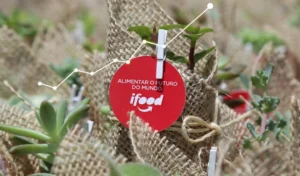On your honeymoon trip, Wil Srubar, materials scientist and professor at the University of Colorado (United States), was inspired while diving in the sea in Thailand. It wasn't romantic at all, but it could make cement production more sustainable, says one Fast Company article.
On this dive, he was observing a coral reef and realized that the microalgae they cultivate calcium carbonate, an essential component for cement production. In other words, they could be a raw material to make the production of construction materials (much) cleaner.
“I had already been working with alternative cements, but it was only when I went diving that I started thinking about how these organisms, macro and microscopic algae, develop these structures. All they need is sunlight, seawater and CO2”, says the researcher (and, since 2021, CEO of Minus Materials, The startup in biotechnology responsible for the first tests of the innovation).
What he discovered was that if limestone can be made from algae and capture CO2 As they grow, part of this process will become carbon neutral, explains Fast Company.
This is important because, according to the publication, cement production is responsible for 8% of global CO emissions2, main greenhouse gas. Some comes from the use of energy to create the material, and another from the chemistry used to obtain calcium carbonate from heating limestone.
Carbon neutral cement
It is estimated that the use of this alternative source could reduce pollutant emissions by 60%, leaving a negative footprint, depending on other changes in the manufacturing process, such as the use of clean energy. This means that microalgae cement has the potential to capture more carbon dioxide than it produces.
The search for a cement that is less harmful to nature is not new, and other alternative sources of calcium carbonate are already known. But for now, only Wil's idea has resulted in Portland cement, the most common type used in construction.
Another benefit is economic. Algae can serve as a raw material not only for cement, but also for the food, beauty and energy (biofuel) industries.
“What we want to demonstrate with our test-scale pilot cultivation is that this is a model that can be replicated anywhere in the world,” says Wil.


